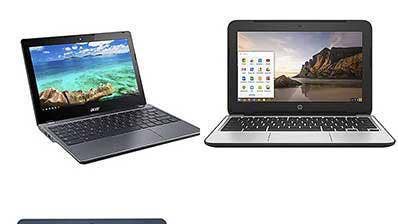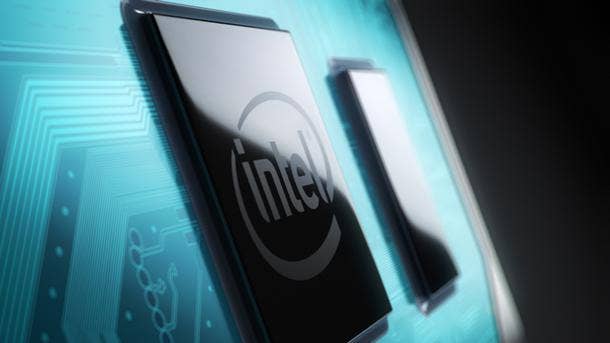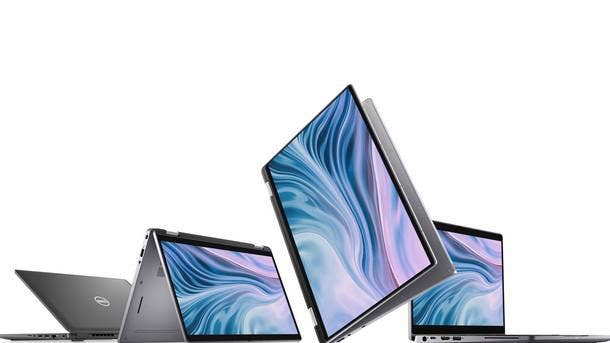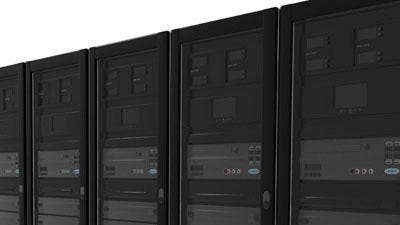The 10 Fastest-Growing Digital Transformation Products Of Q2 2020
While the coronavirus pandemic accelerated some digital transformation efforts in the second quarter, only a handful of product categories, including servers and tablets, saw double-digit growth while others plummeted in demand.

Big Sales Growth For Tablets, Servers, Cloud Infrastructure
While the coronavirus pandemic has accelerated some digital transformation efforts, not all IT product categories benefited and overall revenue for digital transformation actually declined 5 percent year over year in the second quarter of 2020 in North America.
That’s according to new data from market research and business solutions firm The NPD Group, which tracks monthly sales data from the largest distributors and resellers in North America. The firm has previously said that channel partners have a key role to play in digital transformation, which is all about moving to digital technologies to build better outcomes for customers.
[Related: 5 Big Things To Know About The $40B Nvidia-Arm Acquisition]
“Digital transformation in the COVID-19 economy is allowing channel innovation and is allowing some industries to exploit new technologies, creating business opportunities,” said Mike Crosby, director and B2B technology industry analyst at NPD.
That said, some digital transformation product categories fared better than others, and some, like tablets, servers and cloud infrastructure, actually saw double-digit growth in the second quarter, according to the Port Washington, N.Y.-based firm, which measured sales from April to June.
“Digital transformation has been well under way for the last few years, but has been further accelerated for customers, with the need to use technology to abide by pandemic health protocols and to help businesses survive,” Crosby said.
Here are the 10 fastest-growing digital transformation products from the second quarter of 2020, ranked by year-over-year sales growth, according to NPD data.
Sourcing: The NPD Group tracks monthly technology sales-out information from the largest IT distributors and resellers across North America, down to the item level and with overlap removed.

Data Loss Prevention And Endpoint Protection
Products in the data loss prevention and endpoint protection category grew 1.1 percent in the second quarter, which brought the category 2.2 percent share of total revenue related to digital transformation, according to NPD data.
With many people continuing to work from home, many security experts have said that there is a greater need for endpoint production and data loss prevention solutions since remote workers are further removed from traditional IT infrastructure and use work computers on home networks.

Monitoring And Management
Sales of monitoring and management tools grew 5.8 percent in the second quarter, which brought the category’s share of total revenue for digital transformation products to 4.4 percent.
With the coronavirus pandemic prompting many people to work and learn from home, the need for remote monitoring and management solutions has gone up.
At the chip level, rivals Intel and AMD have been making aggressive new pushes to get enterprises to adopt their respective vPro and Ryzen Pro IT management platforms.
“The reality is, vPro‘s got over a decade of experience in that element and as we get into the realities right now and the everyday changes that are happening right now with COVID-19, it’s been interesting to see how the things that we’ve been doing for a decade now are really coming into play and are really proven to be advantageous,” said Intel’s Stephanie Hallford, vice president and general manager, business client platforms, in April.

Security Information And Event Management
Security information and event management (SIEM) product sales grew 7.7 percent in the second quarter, which brought the category’s share of digital transformation revenue to 2 percent.
The pandemic-induced work-from-home boom, which is likely to carry well into next year, has created a greater need for SIEM tools.
According to McKinsey, SIEM tools are highly recommended for distributed workforces because traditional protections like gateways won’t secure remote workers who are not on an enterprise network and are not using a VPN.

Built-To-Order Notebook Computers
Built-to-order notebook computers saw 11.4 percent sales growth in the second quarter, which brought the category to 7.7 share of total revenue for digital transformation revenue.
Laptops were one of the most immediate needs when the coronavirus pandemic prompted many employers and schools to send their workers, students and faculty home.
“Educators are leaning on technology more than ever to prepare for the implementation or continuation of distance learning. Many schools across North America are planning to use a hybrid learning model: part-time in school and part-time online learning. To facilitate this hybrid model, schools are relying on technologies like notebooks and tablets,” NPD’s Crosby said.

X86 CPU Chips
Sales of x86 processors from Intel and AMD grew 15.7 percent in the second quarter, which brought the category to 3.6 percent share of total revenue related to digital transformation.
The demand for processors came not just from an upswing in laptop sales, prompted by the many people moving to work and learn from home, but also by an upswing in server and cloud infrastructure sales, driven by a surge in demand for cloud services.
Both Intel and AMD reported that these trends contributed to double-digit revenue growth for their businesses in the second quarter.

Cloud Infrastructure And Platform As A Service
Cloud infrastructure and Platform-as-a-Service sales grew 16.1 percent in the second quarter, which brought the category to 1.5 percent share of total digital transformation revenue.
The three biggest cloud service providers—Amazon Web Services, Microsoft Azure and Google Cloud—all reported strong growth for their cloud infrastructure businesses in that period, even if the latter two said revenue didn’t grow as fast as the previous quarter.
A major factor in cloud infrastructure adoption around this time was the coronavirus pandemic, which prompted many organizations to accelerate their move to the cloud.
“We’re seeing migration plans accelerate. They’re certainly not going to happen overnight, but we see companies moving in that direction,” AWS CFO Brian Olsavsky said in July.

Notebook Computers
Notebook computer sales grew 23.7 percent in the second quarter, bringing the category to 12.8 percent share of total digital transformation revenue for that period.
With built-to-order laptops seeing a similar boost in the quarter, it’s no surprise that prebuilt notebooks saw an even bigger increase in sales as organizations, ranging from businesses to schools, rushed to equip workers and students with devices that can allow them to work and learn from home.
The major upswing in laptop sales prompted chipmakers Intel and AMD to both report strong sales growth for their mobile processor lines.

Gateway And Firewall
Gateway and firewall sales grew 24.7 percent, bringing the category to 4.4 percent share of total digital transformation revenue in the period.
With so many people working or learning for school at home, there has been a greater need to improve the security of networks with products like VPNs, email and web security applications, firewall applications and network intrusion detection and prevention applications.
“By moving to remote access, companies open huge amounts of holes in their security,” Check Point Software Technologies CEO Gil Shwed said earlier this year about how demand for remote-access VPN deployments has been driven by the coronavirus pandemic. “The corporate network is now open in ways it wasn’t before, and hackers are going to exploit it.”

Tablets
Tablet sales actually grew faster than notebooks in the second quarter, at a rate of 26.2 percent, bringing the category to 3.3 percent share of total revenue related to digital transformation.
The big upswing was tied to multiple dynamics related to the coronavirus pandemic: an increased need from schools entering digital learning or hybrid learning models, as well as retail, food services and health-care organizations instituting efforts to reduce physical human interaction.
“With the start of the education buying season at the end of Q2, and a greater number of industries relying on tablets, the price mix shifted down, with the average prices declining 21 percent,” NPD’s Crosby said. “One-quarter of June reseller tablet sales went to the education sector, up 17 points versus the same month a year ago. To put this into perspective, the reseller channel accounted for one-half of June tablets volume in the total B2B channel.”

Built-To-Order Servers
Built-to-order servers were, by far, the fastest-growing product category in the second quarter, at a rate of 38.4 percent, bringing its share of total digital transformation revenue to 3 percent for the period.
Among the server vendors that saw a major boost in sales was Hewlett Packard Enterprise, which reported an 82 percent increase in service orders for its GreenLake on-premises cloud service.
“The reason we are doing well is we provide a true hybrid experience. Cloud is not a destination. It is an experience,” HPE President and CEO Antonio Neri said in an interview with CRN in August. “Seventy percent of the apps and data are still on-prem, and more and more apps and data is moving to the edge. Customers want a true consumption driven model from edge to cloud. GreenLake offers that in an automated way.”

Digital Transformation Products With Sales Declines
With overall digital transformation revenue down 5.1 percent in the second quarter, there were plenty of product categories that saw a decline in demand.
The products that saw the biggest declines were: desktop computers (down 49.3 percent), large-format commercial displays (down 35 percent), built-to-order desktop computers (down 34.7 percent), desktop and server memory (down 32 percent), operating systems (down 20 percent), switches (down 19 percent), solid state drives (down 4.2 percent) and business intelligence and database systems (down 13.8 percent).
Product categories with smaller sales declines were: adapters (down 6.1 percent), monitors (down 5.5 percent), content and collaboration (down 3.6 percent) and virtualization infrastructure software (down 3.1 percent).